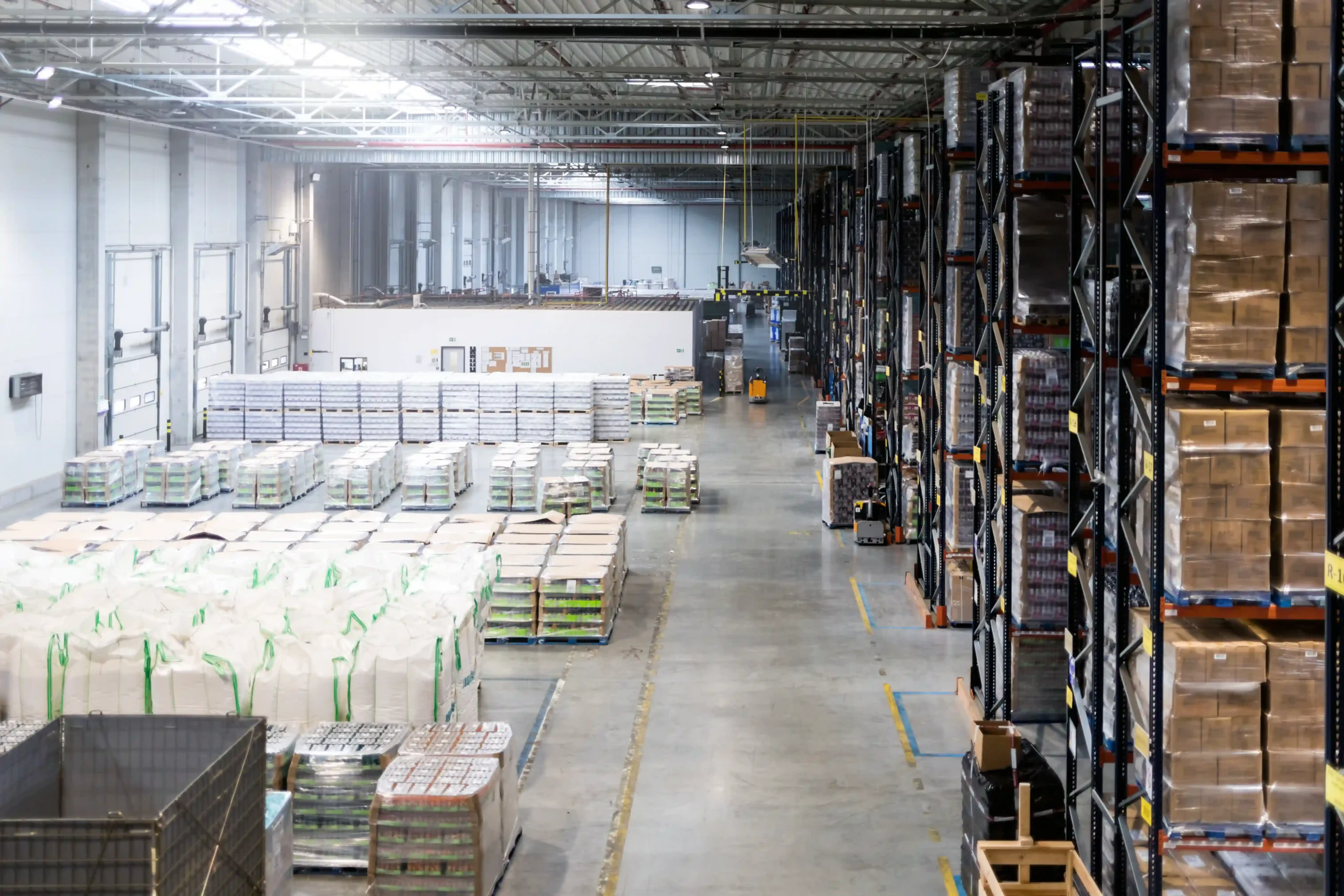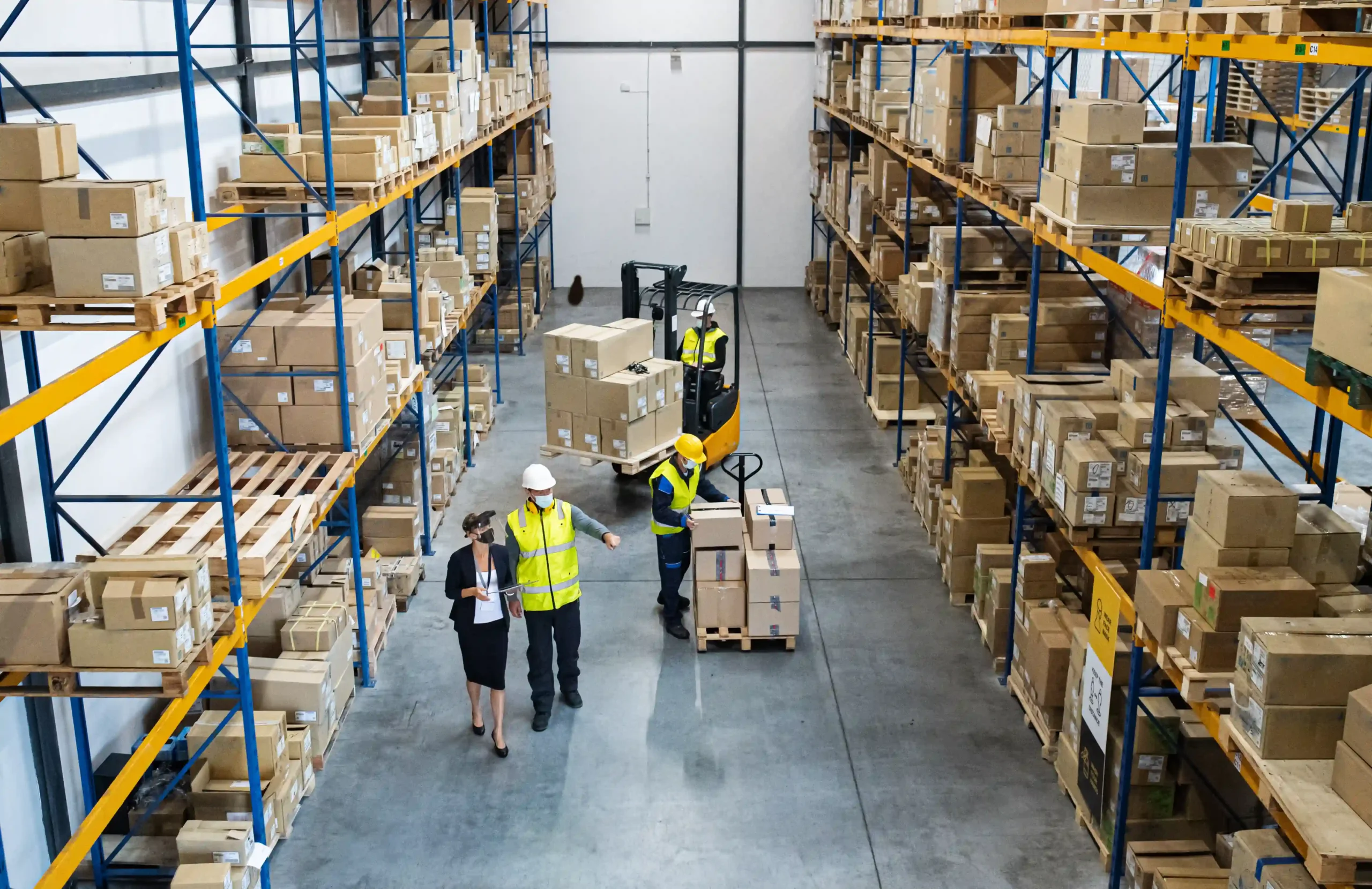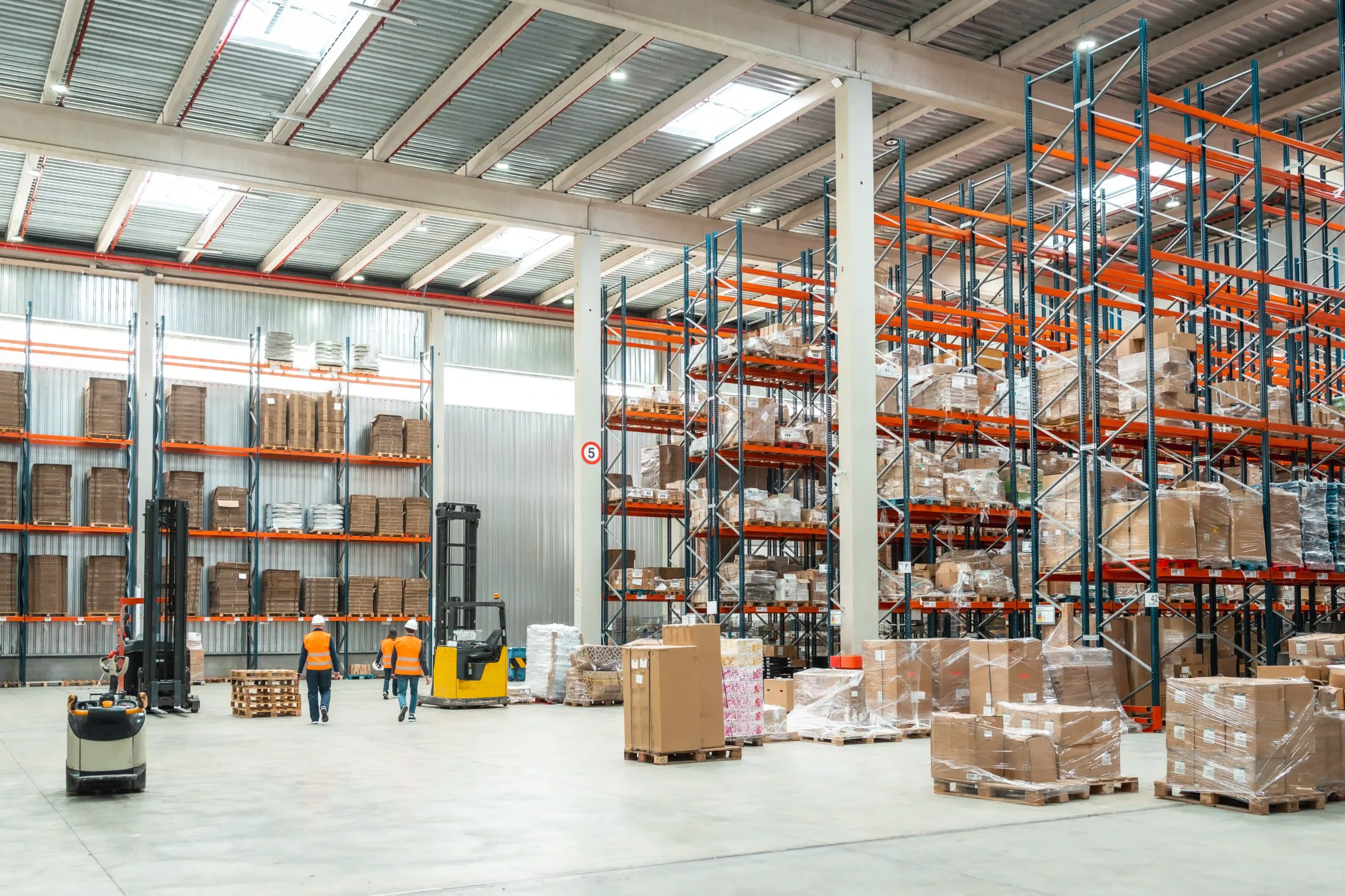A cross docking distribution center is a logistics facility where incoming goods from suppliers are quickly sorted and loaded onto outbound trucks with little or no storage in between. Instead of storing products in a warehouse for days or weeks, this approach allows for immediate redistribution.
The goal is to move goods fast, reduce warehousing costs, and streamline the flow of inventory across supply chains. Now, as someone who has been in the 3PL and Foreign Trade Zone business for over 35 years, I’ve watched firsthand how this model has reshaped logistics.
At Tri-Link FTZ, we’ve worked with countless partners to integrate cross docking into their operations—and the results speak for themselves.

Let me walk you through a typical day inside a cross docking distribution center. Trucks from various suppliers arrive throughout the day and are assigned to inbound docks.
These shipments are scanned, sorted based on outbound destination, and quickly transferred across the facility to outbound docks. Often, this happens in under 24 hours—sometimes even within the hour for high-priority or parcel-based shipments.
At Tri-Link FTZ, our layout includes both U-shaped and I-shaped dock configurations to optimize flow. Our team uses real-time inventory tracking software integrated with our clients’ transportation systems.
This way, goods are never left idle. They’re scanned in, processed, and sent on their way almost instantly.
The result is less time on the ground, fewer touches, and better visibility for everyone involved. Cross docking works best when the supply and demand signals are tight, meaning what’s coming in is already spoken for or expected on the outbound side.
That’s what makes this model ideal for retail replenishment, just-in-time manufacturing, and e-commerce fulfillment
Over the years, I’ve seen businesses slash storage costs by as much as 40% simply by switching to a cross docking distribution center model. Instead of paying for inventory to sit, you pay for it to move.
And that shift in thinking—inventory as flow, not stock—is where real efficiency begins. One major benefit is speed.
When you don’t have to store, pick, and pack inventory, your delivery windows get tighter. That means faster shipping for your customers and more frequent replenishment for your partners.
Another powerful gain is cost reduction. By reducing warehouse space and labor for handling, you cut operational overhead.
And when you consolidate outbound shipments into full truckloads (FTL), your transportation costs drop too. Then there’s customer satisfaction.
Faster delivery, fewer errors, and better visibility into shipments help build stronger brand trust. Especially in industries like retail, food, and pharmaceuticals, that trust can be the difference between loyalty and churn.
Finally, cross docking helps with sustainability goals. Fewer storage requirements, more efficient truck utilization, and better route planning lead to lower emissions.
And as more businesses prioritize ESG, that’s not just a bonus—it’s a requirement.
Not every product or industry is a match for this model, but when the fit is right, the results are transformational. Over the last few decades, we’ve seen the most success in five key sectors:
Retail and consumer goods companies rely on cross docking to push fast-moving SKUs to stores without delays. Seasonal inventory, promotional stock, and trending items all benefit from fast turnarounds.
Food and beverage brands use cross docking to preserve freshness and reduce spoilage. Perishable goods don’t do well in long-term storage, so a rapid pass-through system is ideal for dairy, produce, and meat products.
E-commerce businesses use cross docking to get ahead of the Prime-era expectation for speed. When paired with regional fulfillment hubs, this model helps online sellers meet same-day and next-day promises.
The automotive industry benefits through just-in-time part delivery. Cross docking ensures that critical engine components or assembly items arrive at the plant precisely when they’re needed—no more, no less.
Pharmaceuticals and healthcare logistics often rely on controlled, secure, and quick delivery to pharmacies and hospitals. Cross docking ensures that sensitive medications aren’t left in limbo and arrive within compliance windows.

Let me say this clearly: traditional warehousing isn’t dead. But it serves a different purpose.
Warehousing is great for long-term inventory holding, managing demand spikes, or building safety stock. Cross docking, on the other hand, is built for flow, not stock.
In a warehouse, goods are received, stored, and then picked and packed over time. That process adds handling layers, time, and cost. In a cross docking distribution center, we bypass those stages.
Goods arrive, are sorted, and leave—ideally without ever hitting a shelf. The biggest impact here is on your supply chain velocity.
If your business depends on fast response times, or you carry products with short shelf lives, traditional warehousing slows you down. But if you deal in slow-moving items or irregular demand patterns, warehousing still plays a role.
At Tri-Link FTZ, we often help our clients create hybrid models—blending long-term storage with cross docking to suit different SKUs. The trick is knowing which product goes where. Read more here.
Running a cross docking distribution center isn’t just about having a few extra dock doors and some forklifts. It takes a tight infrastructure and a team that’s trained for speed and accuracy.
The facility itself needs to be designed for movement, not storage. That means wide, clean flow paths from inbound to outbound, minimal racking, and clearly marked staging areas.
You also need plenty of doors—ideally in a U- or I-shaped layout—so inbound and outbound trucks can operate without crossing paths. Technology plays a huge role.
At Tri-Link, we use a combination of WMS (Warehouse Management Systems) and TMS (Transportation Management Systems) to sync every move. From scanning a pallet off the inbound truck to loading it onto the outbound one, we track every second.
Scheduling is also key. If you don’t coordinate truck arrivals precisely, you’ll get bottlenecks.
That’s why we use dock scheduling tools to prevent overlap and ensure continuous movement throughout the day. Of course, none of it works without the right people.
Your staff needs to be trained in sortation, safety, speed, and coordination. That’s why we put time into cross-training and maintaining lean teams who know how to move quickly without making mistakes.
Even with all the advantages, I’ll be the first to tell you that running a cross docking distribution center isn’t without its challenges.
The biggest one we deal with is timing. Everything has to be synchronized—if an inbound truck is late or an outbound one is early, you can wind up with overflow or delays.
This requires precision logistics, especially when handling perishable or high-value goods. There’s also the pressure on real-time data.
If you’re running a system like this, you can’t rely on spreadsheets or manual updates. You need tech that gives you live updates on vehicle location, inventory availability, and dock status.
A moment of miscommunication can mean a misloaded pallet, a missed window, or even a compliance failure in regulated industries. Another common issue is SKU complexity.
When you’re dealing with hundreds or thousands of product types, sorting and grouping them accurately is no small task. That’s why proper training and automation—like RFID or barcode scanning—is crucial to reduce errors.
Lastly, let’s not forget seasonal volume spikes. During peak retail or holiday seasons, volumes can double or triple.
If your facility isn’t built to scale, that can quickly overwhelm even the best teams. We’ve tackled this with scalable labor models and dedicated peak-season workflows that adapt in real-time. Read more here.

Technology is what separates a good cross docking distribution center from a great one. At Tri-Link FTZ, we invest heavily in automation and integration.
From dock scheduling platforms to real-time truck tracking, we make sure our clients know exactly where their products are at all times. Automated conveyor belts and scan zones speed up the physical side of sortation.
RFID tags and cloud-based dashboards help with tracking. Our clients can log in at any time and see what’s been received, what’s on the dock, and what’s on the road.
That kind of transparency isn’t just nice to have—it’s mission critical when speed is the goal. We also use AI-assisted route planning tools that help consolidate loads efficiently and reduce empty miles.
Combined with smart alerts and predictive scheduling, this makes our cross docking operation not just fast, but reliable.
Location is everything. A cross docking distribution center has to be strategically placed to bridge the gap between suppliers and final destinations.
That’s why you’ll find most of them near major ports, highways, and metro hubs. Our facility, for example, sits in a Foreign Trade Zone right near key New York and New Jersey access points.
This gives our clients both customs advantages and incredibly fast turnaround times. Whether it’s imported electronics headed to retailers or food products heading to grocery chains, we can move them within hours—not days.
Being in the right spot also helps reduce transportation costs and environmental impact. With fewer miles driven and more direct routes, you’re not just saving money—you’re shrinking your footprint.
If you’re considering implementing a cross docking strategy, I’d strongly recommend working with a 3PL that’s done it before. There’s a learning curve to this model, and the last thing you want is to learn it through lost shipments or missed delivery windows.
At Tri-Link FTZ, we bring over 35 years of experience to the table. We’ve seen just about every scenario—short-haul bottlenecks, supply chain disruptions, product recalls—and we’ve built systems that not only prevent problems, but recover from them quickly when they arise.
Partnering with a 3PL gives you access to existing infrastructure, trained staff, and advanced systems without the capital investment. Plus, you can scale up or down based on seasonality or demand without having to expand your footprint or hire more people.
If your business values speed, cost-efficiency, and customer satisfaction, cross docking might just be the secret weapon you’ve been missing. It’s not for every product or every operation, but when used strategically—especially with the support of a trusted 3PL like Tri-Link FTZ—it can completely transform how you move goods.
We’ve spent decades refining our systems, building partnerships, and staying ahead of logistics trends so that our clients can stay ahead of their markets. If you’re ready to explore how a cross docking distribution center can work for you, we’d love to talk.
Share this article
We have other resources available upon request as well as one-on-one support and personalized answers, just like our services.
Simply contact us anytime and we’ll get back to you to answer your questions and provide meaningful answers that show you how Tri-Link supports your logistics, reduces costs, and accelerates efficiency.
Tri-Link delivers exceptional FTZ and 3PL services tailored to your global trade needs.
Our solutions combine innovation, quality, and efficiency to exceed your expectations and meet your specific requirements.